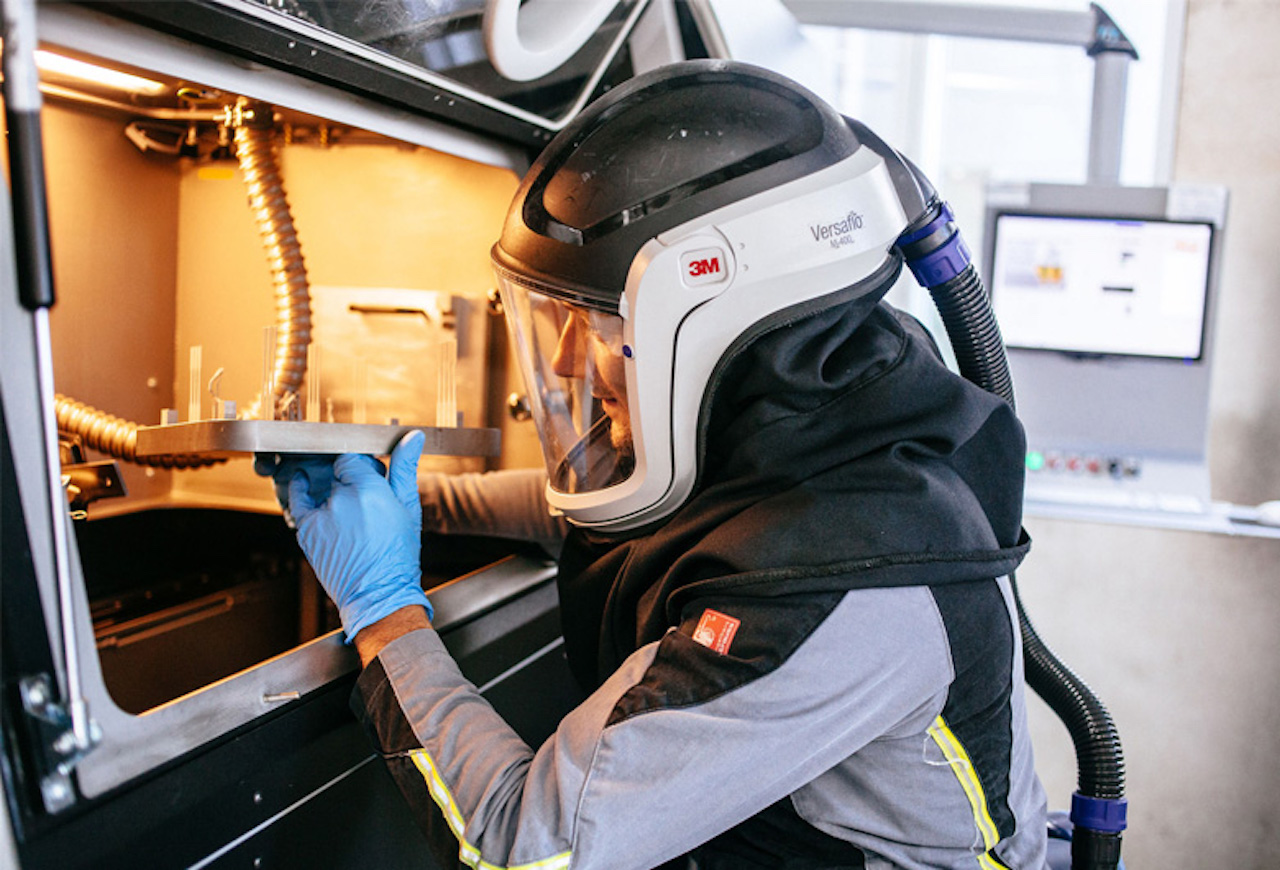
I’m reading an announcement from Materialise about a new metal capability, but realized there’s another part to the story.
In their announcement, they have upsized their capability for 3D printing aluminum. Now they can print aluminum objects for you up to 500 x 280 x 345mm instead of a somewhat smaller 250 x 250 x 295mm. That’s great news for Materialise clients, but really it seems that Materialise has upgraded their 3D metal printing equipment. They don’t say exactly which machine models were involved, but I suspect they’ve obtained a SLM 500 3D metal printer, which happens to have a build volume of 500 x 280 x 365mm. Or perhaps another machine was involved.
But that’s not what I want to talk about today. Instead I want to focus on an image that Materialise used in their announcement, shown at top.
There we see a technician operating one of their 3D metal printers. You’ll note the tech is wearing what appears to be breathing gear while inside the 3D metal printer.
Why is the tech wearing this? It’s because of the presence of fine metal powder used in the 3D metal printing process. This powder is so fine that it can become airborne, and thus inhaled.
Some metals are toxic, and you certainly would not want to be breathing them in, hence the breathing apparatus.
You can see that operating a 3D metal printer is not as straightforward a process as using a plastic 3D printer might be.
But there’s more. The room in which that technician is working must ALSO be air sealed to prevent the escape of rogue metal particles into other areas of the workplace. To do so the room must not only be sealed, but have a negative air pressure to ensure any particles cannot blow out the door.
There’s another aspect of air control: purity. Did you know that a reasonable percentage of the population is affected by exposure to nickel metal? This means that if you intend on 3D printing any medically implantable objects, you must ensure there is no possibility of nickel powder finding its way into, say, a titanium 3D print.
To perform this isolation the best practice is to have separate air-controlled rooms where the toxic nickel printing can take place.
So not only must you construct at least two air controlled rooms, you must also fill them with expensive 3D printing gear, including the printer and other tools such as the breathing apparatus shown above.
And that’s just for the printing. For finishing the prints you must acquire a quantity of additional CNC equipment to separate the prints from the bed, mill them to final state and perform extensive cleaning to remove excess loose powder.
The point of this discussion is to indicate that the process of 3D printing with powder is a very expensive proposition, as the costs of surrounding the 3D printers with appropriate environments and equipment very likely exceeds the cost of the printers themselves.
For this reason we must expect to see 3D metal prints to continue to be very pricey for the foreseeable future, so long as powder processes are employed. This means that the range of applications of 3D metal printing technology will be limited to those industries where part costs are relatively high and thus can absorb the cost of 3D metal printing.
The good news is that there are indeed several industries where this is possible, most notably being aerospace. However, it also means that there are multiple other industries that will find 3D metal printing financially infeasible at this time.
Can this scenario change? I think it could, if new non-powder-based 3D metal printing technologies play out as advertised. There are a number of new market entrants, such as XJET, Desktop Metal and others working on this problem today.
But at this time, these technologies are still in their infancy and have not yet proven their true value in industry. Let’s take another look at this in a year and see what has happened.
Via Materialise

